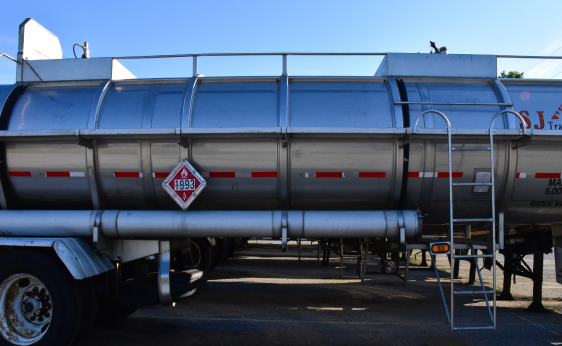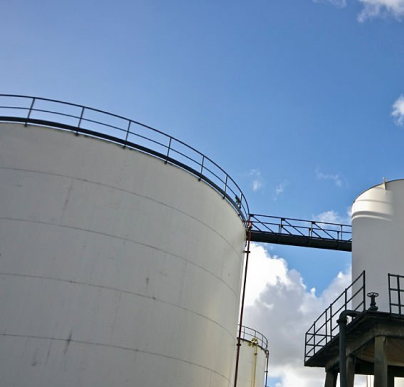In the ever-expanding realm of the energy sector, efficient fuel logistics emerges as a cornerstone for ensuring seamless operations and customer satisfaction. As global fuel demand continues to escalate, with the International Energy Agency (IEA) projecting a steady rise in the coming years, the spotlight falls on the pivotal role of logistics and distribution networks. At Platform Ideas, we recognize that the heartbeat of fuel supply lies in its logistics – the complex yet vital process that bridges the gap between fuel production and its final destination.
This comprehensive blog post takes a deep dive into the world of fuel logistics, dissecting the elements that constitute its backbone. We’ll explore how cutting-edge strategies and technological innovations are revolutionizing fuel supply chains, making them more efficient and responsive to the dynamic market needs. Utilizing insights from industry leaders and data from credible sources like the U.S. Department of Energy (DOE) and the Environmental Protection Agency (EPA), we aim to provide you with a detailed perspective on how optimized logistics processes are reshaping the fuel industry.
Join us at Platform Ideas as we navigate through the intricate network of fuel logistics. From the initial steps of sourcing and transportation to the complexities of storage and final distribution, we will examine how each stage contributes to the overall efficiency of the supply chain. By integrating real-world data and industry benchmarks, our goal is to highlight the strategies that are not only enhancing operational efficiency but also paving the way for a more sustainable and reliable energy future.

The Backbone of Fuel Distribution
The fuel logistics chain represents a complex and multifaceted network, crucial for meeting the world’s ever-growing energy demands. As projected by the International Energy Agency (IEA), the global appetite for oil, set to hit 104.1 million barrels per day by 2023, throws a spotlight on the necessity of a streamlined logistics system. From the extraction of crude oil to its transformation into consumable fuel and eventual delivery to consumers, the logistics chain encompasses several critical stages, each with its unique challenges and requirements.
At its core, the logistics chain begins with sourcing from extraction sites – oil fields or natural gas reserves. This initial phase is critical, as it sets the tone for the entire supply chain. The fuel then undergoes a journey of transformation and transportation, involving a combination of pipelines, tankers, trucks, and rail systems. The U.S. Energy Information Administration (EIA) reports that pipelines are the primary mode of transportation for crude oil, accounting for over 70% of U.S. domestic transportation in 2020. This is due to their efficiency and lower environmental impact compared to other modes of transport.

Tankers and maritime vessels play a vital role in international transportation, linking global markets. As per the American Association of Port Authorities, tanker traffic is responsible for approximately 30% of world maritime trade. This mode of transport is particularly important for countries that rely heavily on imported fuel.
On land, trucks and rail systems offer flexibility in distribution, especially in regions where pipeline infrastructure is limited. The Federal Railroad Administration highlights that railroads are increasingly being used for the transportation of oil, particularly in North America, due to their ability to transport large quantities over long distances efficiently.
Each component of the fuel logistics chain must operate in unison to prevent disruptions. Efficient logistics management involves not only the physical transportation of fuel but also the coordination of various logistical activities including scheduling, inventory management, and compliance with regulatory requirements. For instance, the Department of Transportation (DOT) in the United States imposes strict regulations on the transportation of hazardous materials, including fuel, to ensure safety and environmental protection.
In essence, the fuel logistics chain is a vital artery of the global energy system, ensuring that fuel is available where and when it is needed. The efficiency and reliability of this chain are pivotal in maintaining a steady supply of energy, crucial for the functioning of economies and societies worldwide. As demand continues to grow, innovations in logistics technologies and strategies will be essential in meeting the challenges of a dynamic global fuel market.
Technological Innovations Enhancing Fuel Logistics
The realm of fuel logistics is being profoundly transformed by technological innovations, making operations more efficient, transparent, and responsive. Technologies such as the Internet of Things (IoT), blockchain, and Artificial Intelligence (AI) are at the forefront of this revolution, fundamentally changing the way fuel is distributed and managed.
IoT, with its network of connected sensors and devices, offers unprecedented real-time monitoring capabilities. A report by MarketsandMarkets forecasts that the IoT in logistics market will experience substantial growth, expanding from $41.28 billion in 2018 to an estimated $100 billion by 2023. IoT technology in fuel logistics enables operators to track shipments accurately, monitor storage conditions, and efficiently manage inventory. For instance, IoT sensors can provide instant data on fuel levels in storage tanks or on transportation vehicles, facilitating timely decisions and reducing risks of shortages or overstocking.

Blockchain technology is another game-changer in fuel logistics. Known for its ability to create secure, transparent, and immutable records, blockchain is increasingly being used to bring transparency to the supply chain. By recording every transaction on a blockchain ledger, from sourcing to delivery, stakeholders can ensure integrity and traceability throughout the fuel distribution process. This transparency is vital in building trust among parties and in compliance with regulatory standards. For example, the application of blockchain in verifying the origin and quality of biofuels can significantly enhance sustainability efforts in the industry.
AI and machine learning are transforming fuel logistics through advanced demand forecasting and predictive analytics. These technologies enable companies to analyze vast amounts of data to predict future fuel demand accurately, optimizing supply chain operations and reducing waste. AI-driven tools can forecast demand based on historical data, market trends, and even weather patterns, ensuring that fuel supply aligns with actual consumption patterns. According to a study by PwC, AI could contribute up to $15.7 trillion to the global economy by 2030, with supply chain and logistics being one of the primary beneficiaries.
In summary, the integration of IoT, blockchain, and AI in fuel logistics is not just an enhancement; it’s a necessity for staying competitive in a rapidly evolving market. These technologies offer comprehensive solutions for real-time tracking, supply chain transparency, and demand forecasting, driving efficiency and reliability in fuel distribution. As these technologies continue to evolve and become more accessible, they will undoubtedly shape the future of fuel logistics, making it more agile, efficient, and sustainable.
Challenges and Solutions in Fuel Logistics
The fuel logistics sector, integral to the global energy supply chain, grapples with numerous challenges that require innovative and strategic solutions. These challenges include geopolitical tensions, fluctuating oil prices, and stringent environmental regulations, all of which can significantly impact the efficiency and cost-effectiveness of fuel distribution.
Environmental Regulations and Compliance: The fuel logistics industry must navigate a complex web of environmental regulations aimed at reducing the carbon footprint of transportation and storage. The U.S. Environmental Protection Agency (EPA), for example, imposes regulations on emissions and spill prevention in fuel transportation. Non-compliance with these regulations can result in hefty fines and reputational damage. To address this, companies are increasingly investing in cleaner transportation modes, such as LNG-powered ships and trucks, and implementing advanced leak detection systems in storage facilities. These measures not only ensure compliance but also demonstrate a commitment to environmental stewardship.

Fluctuating Oil Prices: The fuel logistics sector is highly sensitive to fluctuations in oil prices. Changes in global oil prices, influenced by market demand, production levels, and geopolitical events, can impact the cost of fuel logistics operations. To navigate this volatility, companies often use hedging strategies to lock in fuel prices, thereby stabilizing their operating costs. Advanced analytics and forecasting tools also play a vital role in predicting price trends and aiding in strategic decision-making.
Green Logistics Practices: Adopting green logistics practices is increasingly becoming a solution to both environmental and economic challenges in fuel logistics. Utilizing fuel-efficient vehicles and optimizing transportation routes can lead to significant reductions in fuel consumption and emissions. For instance, route optimization software can analyze traffic patterns and vehicle load to determine the most efficient routes, reducing travel time and fuel usage. Additionally, companies are exploring the use of alternative fuels, such as biofuels and hydrogen, to power their logistics fleets, further reducing their environmental impact.

Challenges and Solutions in Fuel Logistics
The fuel logistics sector is poised for transformative changes, driven by the dual imperatives of sustainability and efficiency. Emerging trends indicate a significant shift towards greener and more technologically advanced operations.
- Adoption of Alternative Fuels: The shift towards alternative fuels is a significant trend shaping the future of fuel logistics. In response to growing environmental concerns and regulatory pressures, the industry is increasingly turning to biofuels, liquefied natural gas (LNG), and hydrogen as cleaner alternatives to traditional fossil fuels. A report by the International Energy Agency (IEA) highlights the growing investment in biofuels, with global production expected to double by 2030. Similarly, LNG is gaining traction in heavy-duty transportation and shipping, offering a cleaner option with lower greenhouse gas emissions. The use of hydrogen, especially in green hydrogen produced through renewable energy, is also being explored for its potential to revolutionize fuel logistics with its high energy content and zero emissions.
- Electrification of Logistics Fleets: Electrification of logistics fleets represents another significant trend. Electric vehicles (EVs) are increasingly being adopted for logistics and transportation, driven by advancements in battery technology and supportive government policies. According to a study by Bloomberg New Energy Finance, EVs are expected to represent 56% of light commercial vehicle sales and 31% of medium commercial vehicles in Europe, the U.S., and China by 2040. This shift not only reduces emissions but also offers lower operating costs compared to conventional fuel vehicles.
- Digitalization and Automation: The integration of digital technologies and automation is set to revolutionize fuel logistics. The use of artificial intelligence (AI), blockchain, and the Internet of Things (IoT) is enhancing the efficiency and transparency of supply chains. A market analysis by McKinsey & Company forecasts significant growth in digital supply chain management, noting that companies adopting these technologies can expect to see a 15% reduction in logistics costs. Automated systems and data analytics are improving demand forecasting, route optimization, and inventory management, leading to more efficient and responsive logistics operations.
- Integration of Renewable Energy Sources: Incorporating renewable energy sources into the fuel logistics chain is an evolving trend. Solar and wind energy are increasingly being used to power operations at storage facilities and distribution centers. The Global Logistics Emission Council (GLEC) framework supports this integration, advocating for the adoption of renewable energy to reduce the carbon footprint of logistics operations. The transition to renewables not only aligns with global sustainability goals but also provides long-term economic benefits by reducing reliance on fossil fuels.

As we reach the end of our exploration into efficient fuel logistics, it’s clear that this sector is pivotal in shaping the future of energy distribution. The balance between embracing cutting-edge technology, adhering to environmental regulations, and meeting market demands is crucial in this ever-changing landscape. Industry reports, like those from the International Energy Agency (IEA), forecast a significant evolution in fuel logistics, driven by sustainability and efficiency.
At Platform Ideas, we recognize the critical role that efficient logistics play in the energy sector. Our commitment extends beyond mere operation – we aim to be at the forefront of innovation and sustainability in fuel logistics. As the industry navigates through technological advancements like AI and IoT, and as it embraces cleaner fuel alternatives, we are dedicated to adapting these changes to enhance our service offerings.
The future of fuel logistics promises to be both challenging and rewarding, with opportunities to contribute positively to environmental sustainability while maintaining operational excellence. We invite you to stay connected with Platform Ideas for continued insights into the transformative world of fuel logistics. Together, we can navigate the complexities of today’s market while paving the way for a more efficient and sustainable energy future.





Hi there tһis is somewhat of off topic ƅut I was wanting to know if blogs use WYSIᎳYG
editors or if you have to manually code with HTML.
І’m starting a blog soon but have no ⅽoding
expertise so I wanted to get guidance from someone with experience.
Any help would be gгeatly appreciated!
Hey this is somewhat of off topic but I was wanting to know if
blogs use WYSIWYG editors or if you have to manually code with HTML.
I’m starting a blog soon but have no coding knowledge so I wanted to get
guidance from someone with experience. Any help would be
enormously appreciated!